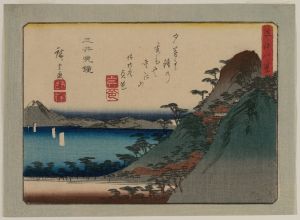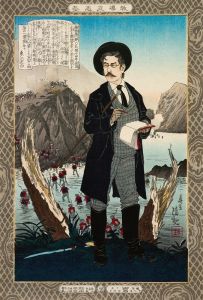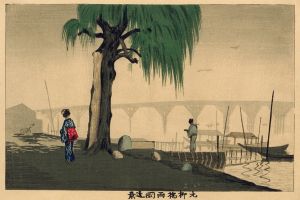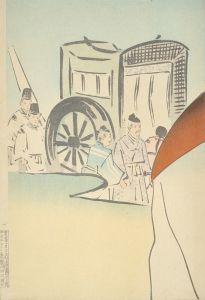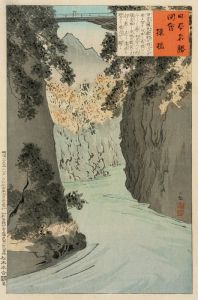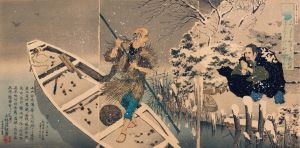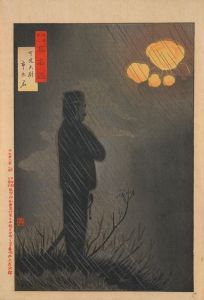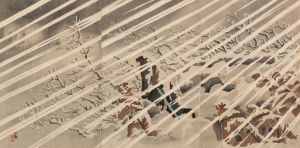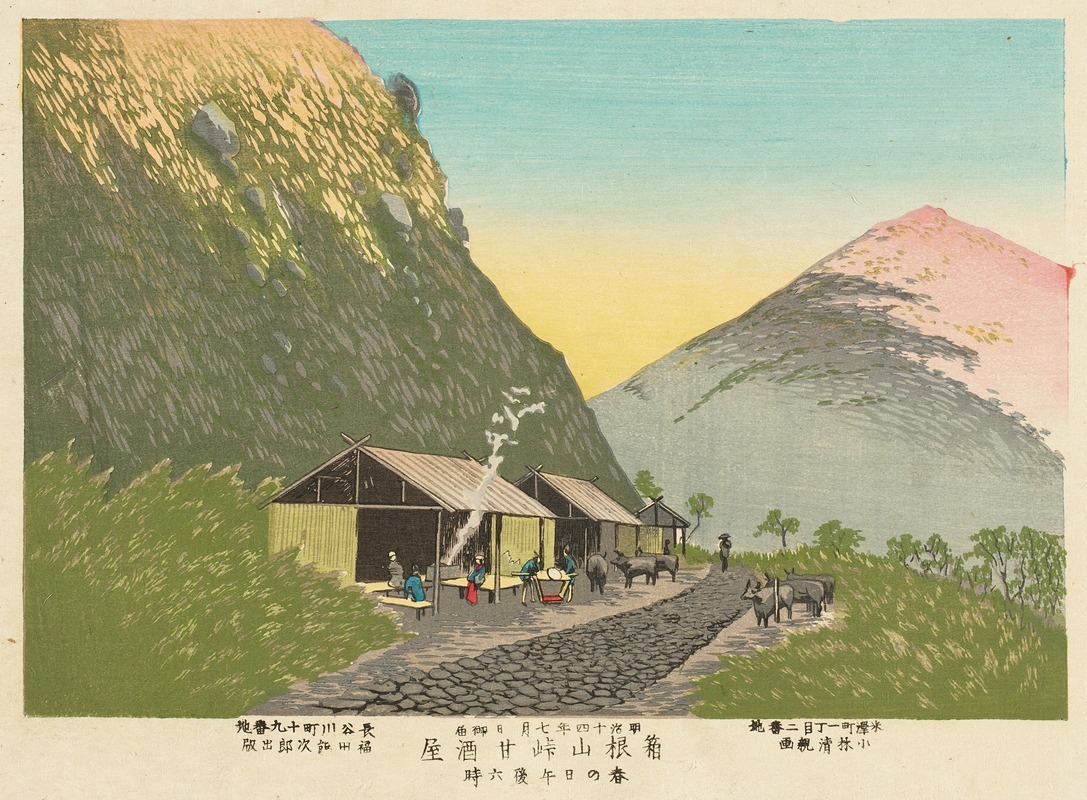
Sweet Sake House at the Foot of Mt. Hakone, 6;00 p.m. on a Spring Day
A hand-painted replica of Kobayashi Kiyochika’s masterpiece Sweet Sake House at the Foot of Mt. Hakone, 6;00 p.m. on a Spring Day, meticulously crafted by professional artists to capture the true essence of the original. Each piece is created with museum-quality canvas and rare mineral pigments, carefully painted by experienced artists with delicate brushstrokes and rich, layered colors to perfectly recreate the texture of the original artwork. Unlike machine-printed reproductions, this hand-painted version brings the painting to life, infused with the artist’s emotions and skill in every stroke. Whether for personal collection or home decoration, it instantly elevates the artistic atmosphere of any space.
Kobayashi Kiyochika was a notable Japanese artist known for his ukiyo-e woodblock prints and paintings during the Meiji period. His work is often celebrated for its innovative use of light and shadow, as well as its depiction of the rapid modernization of Japan during the late 19th century. One of his notable works is "Sweet Sake House at the Foot of Mt. Hakone, 6:00 p.m. on a Spring Day."
This artwork is part of Kiyochika's broader oeuvre that captures the transformation of Japan as it embraced Western technology and ideas while retaining its traditional cultural elements. Kiyochika's work often reflects a blend of traditional Japanese aesthetics with Western influences, particularly in the use of perspective and chiaroscuro, which was relatively novel in Japanese art at the time.
"Sweet Sake House at the Foot of Mt. Hakone" is a prime example of Kiyochika's ability to capture the serene beauty of Japanese landscapes while incorporating the subtle effects of light and atmosphere. The setting of the painting, Mt. Hakone, is a well-known volcanic mountain in Japan, famous for its hot springs and scenic beauty. It has been a popular subject in Japanese art and literature for centuries.
The painting depicts a sweet sake house, a type of establishment where visitors can enjoy amazake, a traditional Japanese sweet rice drink. The time of day, 6:00 p.m., suggests a tranquil evening scene, likely capturing the soft, fading light of dusk. Kiyochika's use of light in this painting is particularly noteworthy, as it creates a peaceful and contemplative mood, inviting viewers to appreciate the quiet beauty of the moment.
Kiyochika's work is often associated with the "Kiyochika style," characterized by its dramatic use of light and shadow, and its focus on capturing the atmosphere of a scene rather than just its physical details. This approach was influenced by Western art techniques, which Kiyochika studied and adapted to fit his own artistic vision. His ability to blend these techniques with traditional Japanese subjects made his work unique and influential.
Throughout his career, Kiyochika produced a wide range of works, including landscapes, cityscapes, and scenes of everyday life. His art provides valuable insights into the cultural and social changes occurring in Japan during the Meiji period. "Sweet Sake House at the Foot of Mt. Hakone" is a testament to Kiyochika's skill in capturing the essence of a place and moment in time, making it a significant piece within his body of work.
Kiyochika's legacy continues to be appreciated by art historians and enthusiasts alike, as his work offers a window into a pivotal era in Japanese history. His innovative approach to art and his ability to convey the beauty of Japan's landscapes and urban environments have solidified his place as a key figure in the history of Japanese art.





